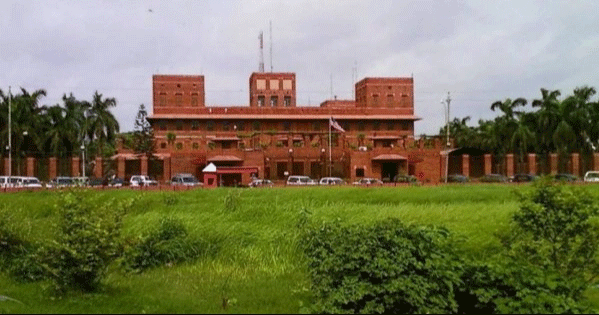Banks face liquidity crisis due to wrong policy of Cen Bank
Staff Correspondent: Cash (liquidity) crisis has become evident in the country’s banking sector due to financial irregularities, central bank’s contraction policy and wrong policy of mergers. Banks have to reach out to other banks as well as Bangladesh Bank to manage the situation.
Banks facing liquidity crisis borrowed Tk 20,657 crore from Bangladesh Bank last Wednesday. In total, the borrowing amount of the banks from the central bank in the 14 working days of this month is more than Tk 2 lakh 37 thousand crore.
Not only that, the trend of borrowing from one bank to another is increasing even if the interest rate is on the rise. This information has come up in the latest report of Bangladesh Bank.
Bankers say that the liquidity crisis in the banking sector is not being resolved due to loan scams, contractionary policy of the central bank and wrong actions of the organization at various times. Especially due to the sudden merger action of some banks without any preparation, panic has been created among the customers. They are withdrawing deposits from banks.
The liquidity crisis among the banks is getting worse. Apart from this, people’s trust in banks is decreasing due to weak position of various banks, failure to return money to depositors on time. Because of this, even though the interest rate on bank deposits is high, customers are investing in government securities for safety of money.
According to the information of the Central Bank, Bangladesh Bank has given Tk 20,657 crore short-term loans to 20 banks and two financial institutions in crisis last Wednesday. Besides, banks have borrowed more than Tk 2 thousand crore from inter-bank repos. Apart from this, banks borrowed Tk 4,095 crores from call market on the same day. That is, in one day, the amount of debt of banks and financial institutions which are in crisis is about Tk 26 thousand crores.
According to the data, Bangladesh Bank has shown great failure in controlling inflation, preserving reserves and managing bank liquidity. As the inflation cannot be controlled, in the same way the financial crisis of the banks is losing people’s confidence in this system. In such a situation, bank merger is suggested from the higher level of the government for the stability of the banking sector. But Bangladesh Bank stubbornly imposed the responsibility of very weak banks on a few good banks. In this, doubts have arisen whether this internationally recognized step (tools) to restore stability in the banking sector will bring the desired results or not. Because of this, analysts believe that there has been a new liquidity crisis in the banking sector.
About the situation Policy Research Institute of Bangladesh (PRIB) executive director Ahsan H. Mansur told, ‘Many of the liquidity crisis seen in the banks is created. By lending to banks through repo, they are borrowing from the central bank and investing in government bills and bonds at high interest rates. Repo lending is completely inconsistent with contractionary monetary policy. That is why there is no impact on inflation. In short, most of the policies that central banks are taking are wrong. Apart from this, there is a big loophole in the policies that have been taken for bank merger.
According to the information of the central bank, till April 24, the banks have taken short- and long-term loans from the central bank in exchange of bills and bonds to the tune of Tk 2 lakh 58 thousand 57 crores. Till April 17, Tk 19,337 crores have been borrowed from interbank repo. At the same time, it borrowed more than Tk 25 thousand crore from interbank repo. Apart from this, the amount of short-term loans from inter-bank loans on the 15th working day of the current month till last Thursday was Tk 60,952 crores. That is, the commercial banks have borrowed more than Tk 3.5 lakh crore from the inter-bank and central banks this month. In short, despite the high interest rates, banks have to borrow from various sources every day to carry out their normal operations.
According to the data, the interest rate in call market rose to a maximum of 11.90 percent last Thursday, which is the highest in the last 11 years and two months. Earlier in 2012, the interest rate in call market was increased to 12.82 percent.
Meanwhile, the delegation of the International Monetary Fund (IMF) stationed in Dhaka wanted to know what Bangladesh Bank does in managing the bank’s liquidity. At that time, when the Central Bank informed about lending to banks through repo, the organization raised questions about why such assistance was given. At the same time, it has been advised to stop this procedure.
According to the data, after the announcement of the bank merger, the customers are withdrawing deposits from the 10 banks that have joined the process. Especially the information about withdrawal of deposits from Padma, EXIM, BASIC, BDBL and Rajshahi Krishi Development Bank has come to media. Many customers are withdrawing deposits even from the state-owned Sonali Bank.
A senior official of Sonali Bank said, ‘Many people are withdrawing their deposits since the news of the merger of Bangladesh Development Bank with Sonali Bank came to the media. I heard that customers are withdrawing deposits from BDBL as well. I have never seen such an incident before.
According to central bank sources, the policy of increasing interest rates has been adopted due to contractionary monetary policy. By increasing this rate, efforts are being made to reduce the rate of inflation by curbing the flow of money in the market. Due to this, the interest rate of loans is increasing in all sectors. In the meantime, the interest rate on Treasury Bills for government borrowing has also been increased. Due to this, the interest rate of loans has also increased.
However, sources in the commercial banks said that earlier banks used to borrow from the money market for one day to deal with the liquidity crisis. The next day would coordinate it. Still doing it. However, banks are now offering short- and long-term loans in addition to loans. These funds are not always coming back to the market. Due to which the ability of many banks to lend money has decreased. So, the amount of borrowing from the central bank is increasing day by day.
When asked about the way out of this situation, the former chief economist of the World Bank’s Dhaka office Zahid Hossain told Daily Industry, “The liquidity crisis in the banking sector has increased due to the sale of dollars, the decrease in the growth of deposits, the increase in defaulted loans and the contraction policy of Bangladesh Bank.” At the moment, it is not possible to move away from contractionary policy in the interest of controlling inflation. Therefore, there is no alternative to look at the good governance of the dollar market and banks to solve the liquidity crisis.
President Joe Biden tests positive for COVID-19 while campaigning in Las Vegas, has ‘mild symptoms’
International Desk: President Joe Biden tested positive for COVID-19 while traveling Wedne…








